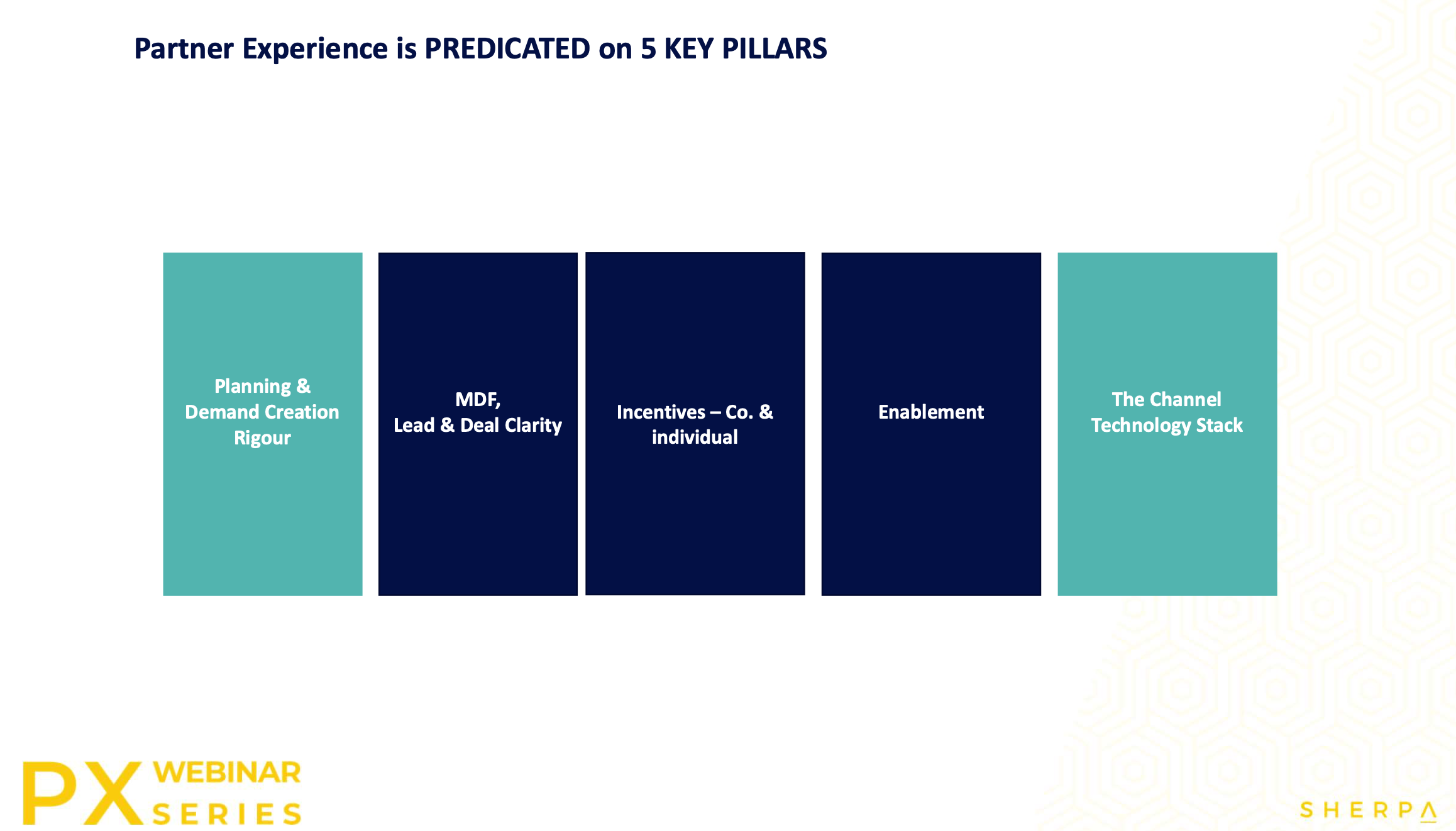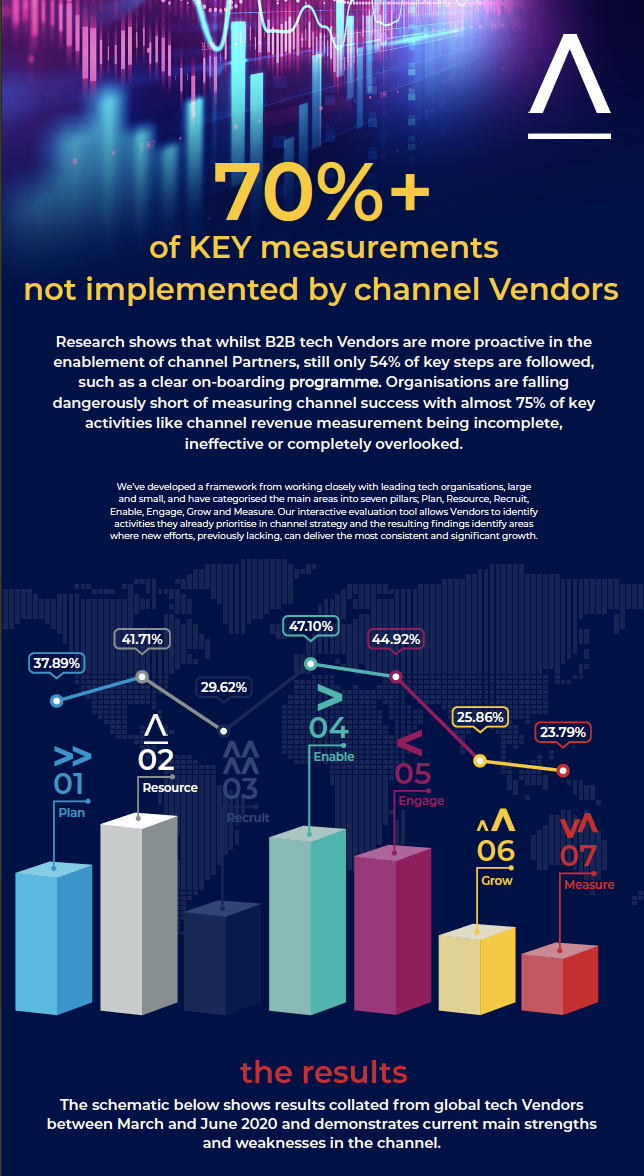The Future of Partner Marketing: 6 Takeaways from the webinar Webinar
Partner marketing is entering a new era.

In light of the pandemic and the shift to digital, with new financial years starting, Sherpa recognises the importance of re-imagining and re-evaluating how to approach MDF usage: what to allocate, what activities, how to measure and ultimately how to generate more return from the investments.
We welcomed Zuleika Philips (UK&I Channel Leader, Zoom) and Rob Reynolds (Head of EMEA Channel & Tech Partner Marketing, Verizon) alongside Sherpa Director, Pascale Smith to discuss some of the actions companies’ are taking to deliver value from MDF budgets in the coming year.
We asked these channel leaders:
What changes have you been forced to make to your MDF spending and planning over the past 12 months?
Zuleika Philips explains that the shift in strategy has not specifically been the last 12 months, but the last 24-36 months with retention at the heart of marketing efforts.
“The major shift is no longer short term activities for quick pipeline. But rather, what we can invest in together that delivers long term, joint value to both Vendor and Partner, and how can we make this longer term rather than a very quick win. I think that's probably the most drastic change when I look at the requests that we get from channel Partners historically, versus where we are today.”, Zuleika said.
Rob Reynolds expressed that smaller Partners have had a different experience;
“They've only got a finite amount of marketing resources so the last 12 to 18 months has been particularly disruptive for them. We saw the drop off from physical to digital. So we changed tack from MDF driven by events, sponsorships, etc, and we adopted a marketing services approach. Acknowledging that there was less marketing resource in these Partners and building from joint value proposition up.”
Gone are the days of tradeshows and telemarketing agencies being the default method of marketing; hybrid models that actually specifically address the program objectives are now what channel leaders want to see as part of MDF spending. This makes sense - like every other department in any organization, marketers have long and short term objectives, so if they do not have the capacity or resources to reach their goals, the efforts can fall flat. Especially if MDF activities are siloed from the rest of the business’ quarterly or annual objectives and the fund is being used simply because it's available without a clear direction or analysis.
A joined up approach between channel Partners and Vendors proves to have a significantly more fruitful impact on your market growth efforts, executing successful programmes and - importantly - getting a true and measurable return on investment.
What are the biggest challenges you have with your Partners to generate value from MDF?
Challenges the pandemic brought seem obvious to consider when discussing how things have shifted in terms of marketing development, budget allocation and visibility. Zuleika Philips explains the challenge that even if MDF is there to help grow your business, there isn’t reliably those key creative ideas and concepts to effectively go-to market.
“Most of the Partners are developing their value-add, their go-to-marketing, their mission statement in-house to promote their entire business. In a multi-Vendor environment, it’s often a challenge of how do you bring ideas to specifically grow one Vendor in that environment. It all comes back to putting together the plan with the Partner, resourcing the plan, then maintaining it and monitoring the metrics around it”, Zuleika explains.
Rob Reynolds agrees;
“Getting into a large Partner's, marketing calendar, can be difficult; and quite disruptive. An approach can be to invest in a central campaign that they are running with other Vendors in a way which isn’t competitive to what we’re bringing to the table”.
Could this be a way forward for Partners and Vendors - a blend of co-operation and competition towards so called ‘coopetition’ in the channel environment? Food for thought.
Rob continues,
“Vendor investment should be a strategic decision. Strategically aligning yourself with channel Partners based on a few things; revenue being one. How much are they already delivering activity being second, their investment into resource to drive pipeline.Third would be potential and how that Partner can grow, if you give them that time, resource and funding. And that's why the data is so important, being able to track the investments you're making.”
A strategic account plan and Partner account plan grounds the whole relationship and determines which capabilities, in which market, and what is the growth expectation in relation to that plan. Trying to implement an MDF programme without a strategic and Partner account plan will be “rudderless”. Zuleika adds how critical as part of this process it is to include a follow up plan to investigate the data and evaluate the investments being made. Data, evaluation and improvement facilitated by this data around MDF is key.
Sherpa recommends a strategic account plan which has at its heart;
Having the resources and time to create an innovative approach towards MDF and planning your next steps in marketing and sales is worth it's weight in gold. Finding new ways to support your brand awareness, increase market penetration, strengthen partnerships and grow revenue sets you ahead of competitors, all can be borne out of an effective MDF plan.
Rob Reynolds explains that a useful starting point to improve your approach to MDF is to actually look at what you are already doing then augment this to bring structure, resource additional clarity and value to the activities.
Examples of how Verizon used intuitive strategies towards improving productivity and partnerships between the Vendor and channel Partners include creating joint value propositions, alongside baseline collateral pieces, wireframes for web pages to showcase the partnerships work, and social media. Innovation is all about evaluating and implementing strategies to better support marketing and sales teams. Questioning how Partner's sales and marketing teams need to be supported in their roles and what services need to be available, resulted in a really well received and successful partnership. Rob summarises that,
“If you’re going to offer MDF, particularly to a smaller Partner, offer an idea - there is nothing worse than being offered money with no ideas on how to activate it.”
There are major opportunities coming from the Partner and it's important for them to demonstrate the joint value proposition and what can be done to support them. Zuleika Philips explains how Zoom have converted to a place of modern ‘co-selling’. This entails co-innovating, co-investing, co-collating across a broader ecosystem to match the needs of both Partner and Vendor. Partnerships are now formed by teams coming together with compatible ideas whilst placing less of an emphasis on previous track records.
A systematic approach is needed, asking the questions of;
How are you going to collect the ideas? ➡️ who is going to seek these ideas?
How are you going to assess the ideas? ➡️ who is going to do this and using what metrics?
What plan are you going to use and how to implement them? ➡️ what is the Partners role?
Innovation now comes in the form of bringing something to the table, be those ideas, resources or new metrics - so Vendors should be looking out into the market to look at ideas and how to get a joint project off the ground.
The key part of any Partner-Vendor relationship is having the time to create plans together based on what is working in your organisation, your unique value proposition, as well as bridging together different products and services in your portfolio.
Additionally, Zuleika explains that:
“It is important to segment your own marketing plans over upcoming quarters instead of requesting for x amount in funding to plug this activity its vital to segment your marketing efforts into specific areas. For example, 'here is my sales campaign over the next 6 months, my outbound based campaign, if we achieve x amount it would be great for us to invest in x which will boost our market penetration in this place'. Also, it's all about being open to ideas and to work with everybody to see how you could achieve that success together.”
These objectives will be different for each Partner but it should all stem back to meeting your key channel objectives and improving relationships within the channel.
Final remarks
So, what does all this mean for your business? How are you going to improve your strategic account plan in order to improve communication and the execution of ideas between Vendor or Partner? Why is your MDF budget so important to you and how are you going to give the activities it provides a fair chance of success?
Approaches to MDF have certainly shifted in recent years, with the overwhelming shift to digital and the move away from product marketing to solution marketing. The focus should be on activities which provide long-term value to the Partner and Vendor. Creating a world-class MDF program comes down to alignment, planning, ideas, resourcing and measurement. And ultimately how a Vendor can influence Partner's marketing efforts to maintain a focus on the Vendor through use of MDF.
Thank you to our webinar guests, Zuleika Philips and Rob Reynolds for joining us and for sharing your valuable experiences and insights.
If you would be interested in having a blueprint for best practice MDF planning which Pascale Smith discussed in the final section of this webinar, please get in touch. Likewise, as mentioned above, your strategic account plan is important also, so if you would benefit with a discussion regarding this, please get in touch with the email below.
I hope to see you attend our next webinar in the Interactive Series, so please subscribe to hear the latest updates from Sherpa.
For more information or to discuss how Sherpa can help you, please get in touch:

Partner marketing is entering a new era.

Partner marketing isn’t just evolving, it’s accelerating. With buying committees now stretching to 20+ decision-makers, AI reshaping how we work, and...

.png)
Welcome back to Sherpa’s PX Webinar series, where our channel specialists are joined by leading tech experts to share their insights into channel...

2021 has been the year that Partner Experience (PX) has lept to the forefront of channel strategy and operations. We have been speaking with global...

The objective behind creating the Channel Transformation Framework was to produce a picture of maturity for channel professionals wanting to assess...